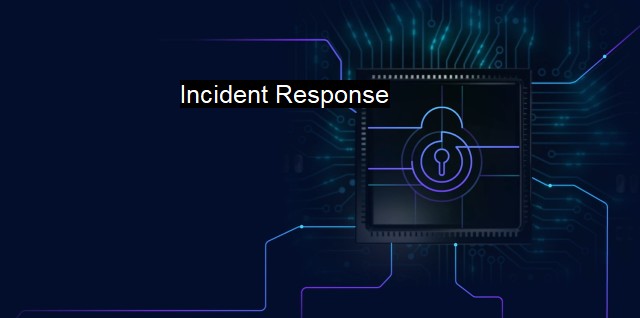What is Incident Response?
Effective Incident Response in Cybersecurity: Protecting Systems and Preventing Future Threats
One of the most important aspects of maintaining the security of a system is having a plan for responding to incidents. Incident response refers to the process of addressing and containing security incidents that could potentially put a system or network at risk. These incidents can be anything from attempted cyber attacks to data breaches to insider threats, and being able to react quickly and effectively to them is critical to protecting the system as a whole.The goal of incident response is twofold; first, to prevent the incident from causing any further damage to the system, and second, to identify the root cause of the incident and take steps to prevent it from happening again in the future. In order to achieve those goals, an effective incident response plan should be in place that lays out specific steps that responders should take in the event of an incident.
At a high level, the incident response process often involves the following steps:
1. Identification: The first step is to identify that an incident has occurred. This can come in the form of a system alert, a user reported issue, or any other indication that something is amiss.
2. Containment: Once an incident has been identified, responders must work quickly to contain it to prevent it from spreading to other systems and causing more damage.
3. Investigation: With the incident contained, responders can begin investigating to determine the root cause of the incident and what systems and data might have been compromised.
4. Response: Based on the investigation findings, responders can take appropriate actions to remediate the situation. This might involve restoring data from backup systems, installing patches or updates, or taking legal action against attackers.
5. Recovery: Once the incident has been fully addressed, responders can begin working on the steps needed to return systems to normal operation and ensure that they are once again secure.
While the specific steps of an incident response plan may vary depending on the particular organization and systems being secured, these five steps of identification, containment, investigation, response, and recovery typically form the core of most incident response plans.
In order to be effective, an incident response plan must be well-defined and communicated to all relevant stakeholders. This includes not just the IT staff who will be directly responsible for responding to incidents, but also executives and other business leaders who will need to understand the risks and implications of various incidents.
an effective incident response plan should be regularly tested and updated to ensure that it remains relevant and effective. Regular testing can identify gaps in the plan, such as overly long response times or systems that are overlooked in incident identification. Updates can be made based on new threats that have emerged or changing business needs that require adjustments to the plan.
a strong incident response plan is an essential component of a comprehensive cybersecurity strategy that seeks to proactively mitigate risks to a system or network. With a well-designed and maintained plan in place, responders can quickly and effectively address incidents when they occur, minimizing damage and keeping systems secure.

Incident Response FAQs
What is incident response and why is it important in cybersecurity?
Incident response refers to the processes and procedures that organizations follow when a cybersecurity incident occurs. It involves detecting and investigating the incident, containing its impact, mitigating the damage, and restoring the affected systems and data to normal operations. Incident response is crucial in cybersecurity because it helps organizations quickly and effectively respond to security incidents, minimize their impact, and prevent them from causing further damage.What are the key elements of an effective incident response plan?
An effective incident response plan should have clear objectives, defined roles and responsibilities, well-defined procedures and workflows, appropriate communication channels, adequate resources, and regular testing and training. It should also be tailored to the specific needs and risks of the organization, and aligned with relevant laws, regulations, and industry standards related to cybersecurity and data privacy.How can antivirus software help with incident response?
Antivirus software can play a vital role in incident response by detecting and blocking malware and other security threats, and providing insights into the nature and scope of the incident. It can also help with data analysis, forensics, and incident reporting, and provide a baseline of security for the organization's systems and networks. However, antivirus software alone cannot guarantee complete protection against all types of cyber threats, and should always be complemented with other security measures and best practices.What are some common mistakes to avoid when conducting incident response?
Some common mistakes to avoid in incident response include: underestimating the severity or complexity of the incident, failing to prioritize actions based on the criticality of assets or data, lacking clear communication and coordination among team members, not following documented procedures and workflows, not properly documenting the incident and the response process, and not conducting post-incident analysis and lessons learned. To minimize these mistakes, incident response should be well-planned, well-practiced, and continuously improved based on feedback and evaluation. External Resources
| | A | | | B | | | C | | | D | | | E | | | F | | | G | | | H | | | I | | | J | | | K | | | L | | | M | |
| | N | | | O | | | P | | | Q | | | R | | | S | | | T | | | U | | | V | | | W | | | X | | | Y | | | Z | |
| | 1 | | | 2 | | | 3 | | | 4 | | | 7 | | | 8 | | |||||||